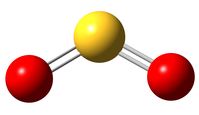|
With respect to the Dec. 1999 entry, a combined fit of the
v2 = 0 and 1 data has been performed.
Details of the fit have been published in
(1) H. S. P. Müller and S. Brünken,
2005, J. Mol. Spectrosc., 232, 213.
A considerable number of rotational transitions was taken from that
work. Additional v2 = 0, 1 transition frequencies
were taken from the compilation of
(2) F. J. Lovas 1985, J. Phys. Chem. Ref. Data
14, 395; from
(3) S. C. Mehrotra, G. Bestmann, H. Dreizler, and H. Mäder,
1984, Z. Naturforsch. 39a, 633; from
(4) S. C. Mehrotra, H. Dreizler, and H. Mäder,
1984, Z. Naturforsch. 40a, 683; from
(5) P. A. Helminger and F. C. De Lucia
1985, J. Mol. Spectrosc. 111, 66; from
(6) E. A. Alekseev, S. F. Dyubko, V. V. Ilyushin, and S. V. Podnos
1996, J. Mol. Spectrosc. 176, 316; and from
(7) H. S. P. Müller, J. Farhoomand, E. A. Cohen,
B. Brupbacher-Gatehouse, M. Schäfer, A. Bauder, and G. Winnewisser,
2000, J. Mol. Spectrosc., 201, 1.
Further v = 0 data were taken from
(8) S. P. Belov, M. Y. Tretyakov, I. N. Kozin, E. Klisch,
G. Winnewisser, W. J. Lafferty, and J.-M. Flaud,
1998, J. Mol. Spectrosc. 191, 17.
The v2 = 1 – 0 energy difference was
determined by including ν2 infrared transitions
from
J.-M. Flaud, A. Perrin, L. M. Salah, and W. J. Lafferty,
1993, J. Mol. Spectrosc. 160, 272.
Transitions with uncertainties much larger than those at
similar frequencies and with similar quantum numbers have not
been merged.
Predicted uncertainties of the transition frequencies should be
reliable up to about 3K"a + J"
≈ 100.
The dipole moment is from
(10) D. Patel D. Margolese, and T. R. Dyke
1979, J. Chem. Phys. 70, 2740.
The partition function includes both vibrational states.
The individual contributions (> 0) are given in parentheses.
|
